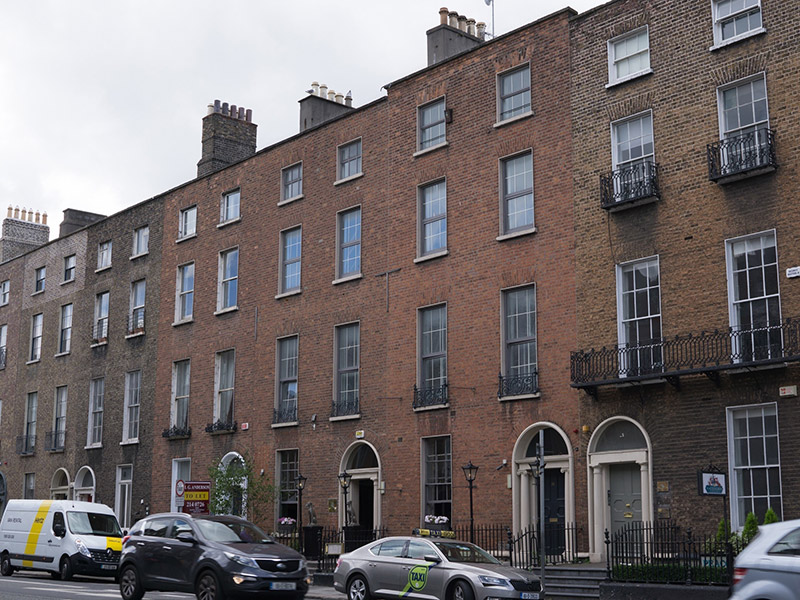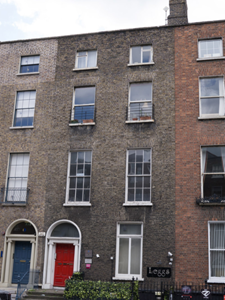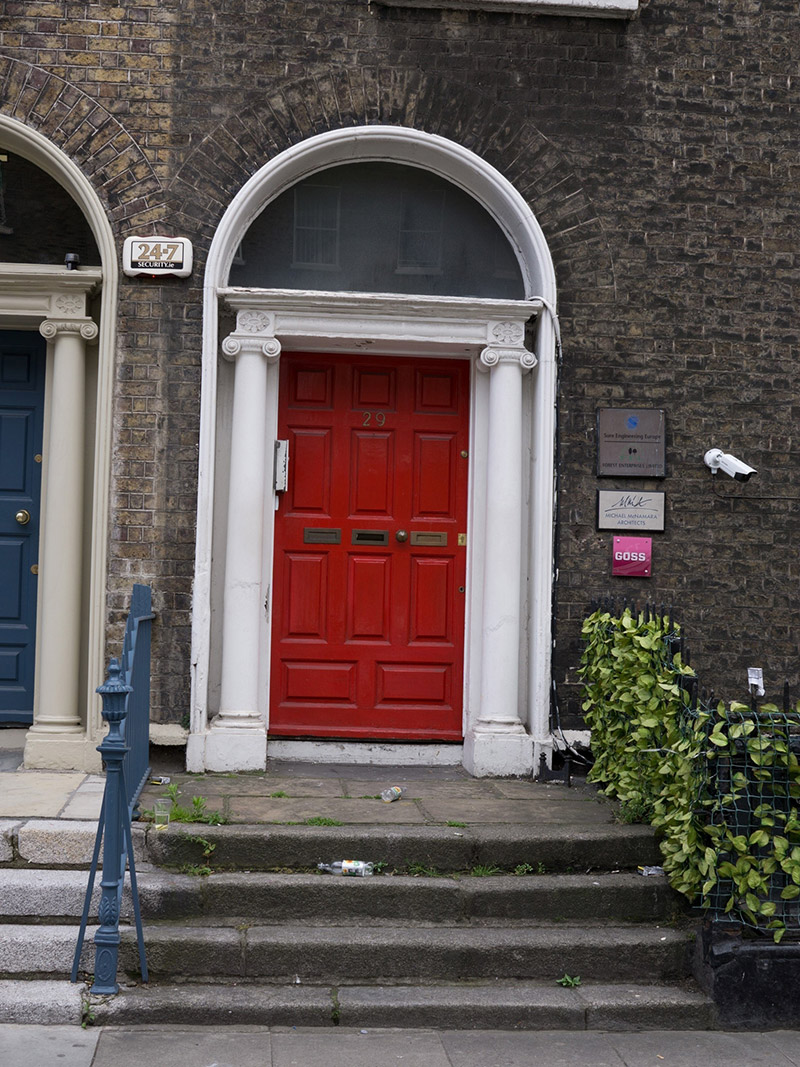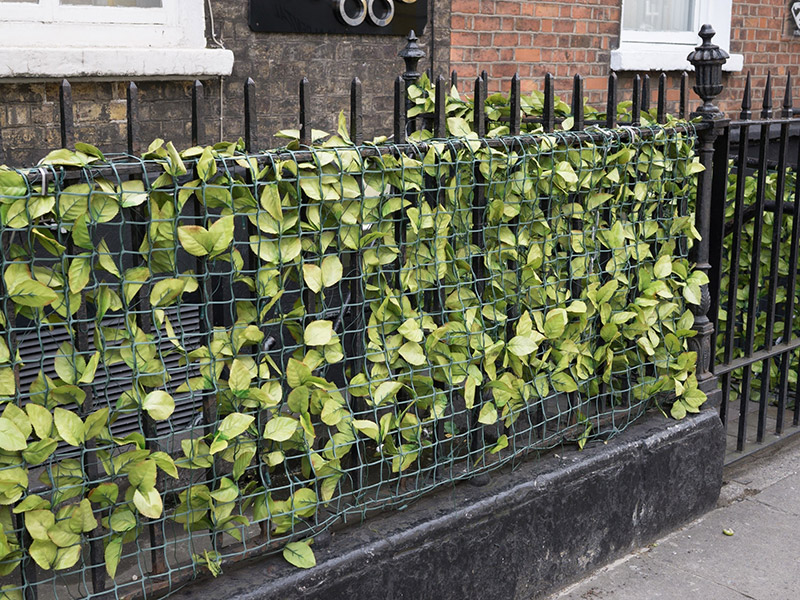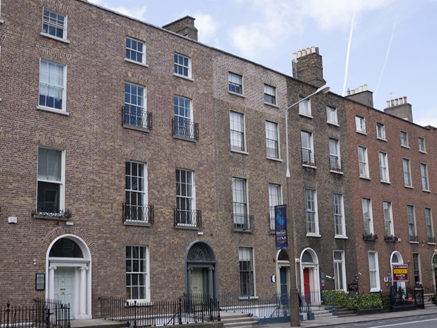Survey Data
Reg No
50110506
Rating
Regional
Categories of Special Interest
Architectural, Artistic
Original Use
House
In Use As
Office
Date
1805 - 1815
Coordinates
316295, 232909
Date Recorded
25/06/2017
Date Updated
--/--/--
Description
Terraced two-bay four-storey over basement former house, built c. 1810, having two-storey projection to rear (west) elevation. Now in use as offices. M-profile pitched slate roof concealed behind brown brick parapet with granite coping. Brown brick chimneystacks having clay pots. Brown brick, laid in Flemish bond, to walls, with cut granite plinth course over rendered walls to basement. Square-headed window openings having masonry sills and raised rendered reveals, with mixed one-over-one pane and six-over-six pane timber sliding sash windows and replacement windows. Wrought-iron balconettes to second floor windows. Square-headed window and door openings to basement having recent fittings. Round-headed door opening with moulded render surround. Doorcase comprising Ionic columns and entablature. Plain fanlight and timber panelled door. Wrought-iron boot-scrape to granite and limestone platform, granite steps. Wrought-iron railings, having cast-iron corner posts with urn finials, set on carved granite plinth wall, to front.
Appraisal
This house was built in the characteristic style of the Georgian period, with pleasing well-considered proportions enlivened by fine detailing. The character of the surrounding area was set by the construction of townhouses built for Lord Dunboyne, the Duke of Ormonde. While this house is not as ornate as others on the street, the survival of the Adamesque doorcase contributes to its architectural heritage significance. Lower Leeson Street was an important routeway in Georgian Dublin, serving as the road to Donnybrook from St. Stephen's Green.
